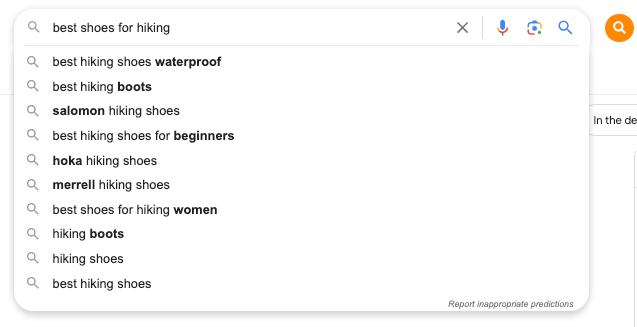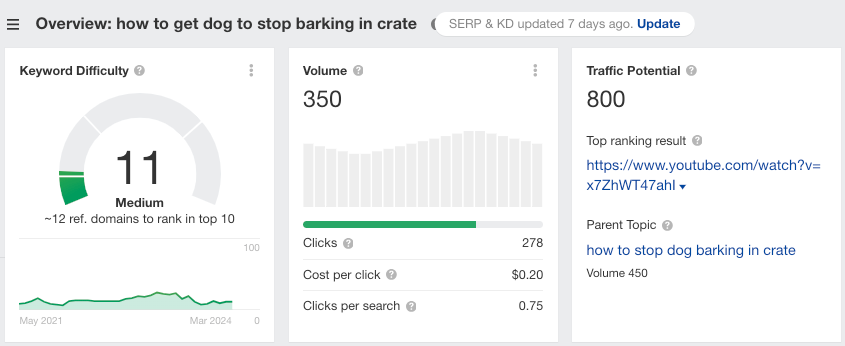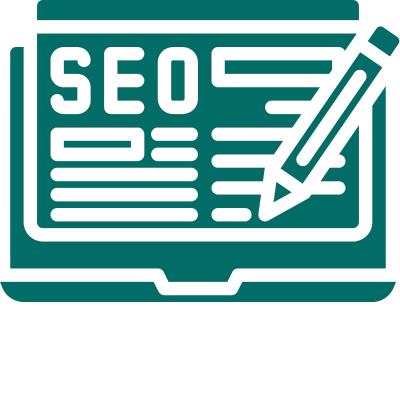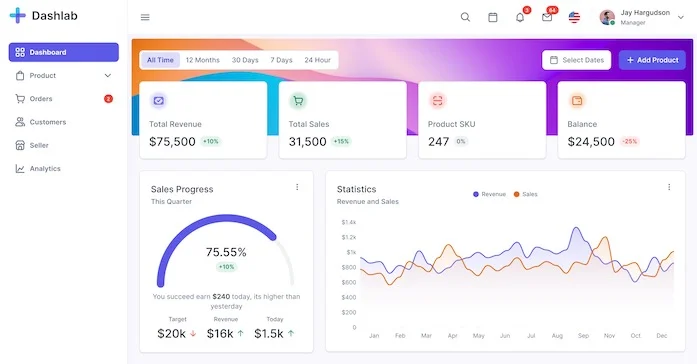Users with “high intent” are likely to take actions such as making a purchase or subscribing. You can successfully attract these qualified leads by incorporating and targeting high intent keywords in your content.
Read on to understand further what high intent keywords are, how they can amplify conversions for your business, and ways you can find them.
What are high-intent keywords?
High-intent keywords are search terms used by a person when they are ready to take action, whether that’s purchasing a product, subscribing to a service, or solving a specific problem.
Think about the search term “buy running shoes men.” Anyone with this search query isn’t just casually browsing the web. Instead, they’re more likely to be seeking a solution to their need for running shoes.
Similarly, someone typing in “best price iPhone 15 Pro,” may be more than ready to make a purchase and are simply comparing options to get the best deal.
In short, these high-intent keywords tell you that the searcher is already aware of their needs, has likely done some initial research, and is ready to make a decision. These are the people you want to attract, as they’re more likely to convert into customers—and that’s the ultimate goal for any business, right?
Understanding search intent
Think back to the last time you used Google. Chances are, before you even typed in your search term, you had a clear goal in mind. In the marketing world, we call this goal user search intent. Search engines then try to decipher this intent and provide you with the most relevant results.
According to Backlinko’s Brian Dean, 99% of all search terms fall under four primary search intent categories, namely:
- Informational intent: Users are seeking information or knowledge about a particular topic. They might be researching a new product, learning about a specific condition, or simply expanding their knowledge.
- Navigational intent: Users are trying to find a specific website or webpage. They might be looking for their favourite online store, navigating to a particular section of a website, or trying to locate a specific article or resource.
- Commercial intent: Users are actively researching products or services with the intention of making a purchase. They might be comparing prices, reading reviews, or exploring different options.
- Transactional intent. Users are ready to take action, such as making a purchase, subscribing to a service, or downloading a file. They might be entering their credit card information, signing up for a free trial, or clicking a download button.
High-intent keywords generally fall under the commercial and transactional intent category,
Why businesses should target high-intent keywords
Now, you come to realise that when a person uses a high-intent keyword, they are essentially signalling their readiness to engage with a business. Prioritizing these keywords can bring in the following:
- Increased conversion rates: Users with high-intent keywords are more likely to take action, such as making a purchase or submitting a form.
- Improved ROI: Targeting high-intent keywords can lead to a higher return on investment for SEO efforts
- Qualified leads: high-intent keywords attract more qualified leads, who are more likely to become paying customers.
- Stronger brand reputation: Ranking for high-intent keywords enhances a business’s online presence and credibility.
High-intent keywords vs. low-intent keywords
Just as there are high-intent keywords, there are also low-intent keywords.
These low-intent keywords signal that users are still in the early stages of their search journey, researching a topic, exploring options, or simply navigating the internet. These keywords, falling into the informational and navigational intent categories, typically don’t result in direct sales.
So, does this mean you should ignore “low-intent keywords?” Of course not.
Consider the search term “what is a web designer.” The searcher is likely curious about it or thinking about a career in web design.
As they get more immersed in the web design world and want to learn the ropes themselves, they’ll eventually start using high-intent keywords like “free web designer courses online.”.
Thus, although low-intent keywords may not promptly generate sales, they still hold value. They help you connect with people who are just starting to show interest in your area of expertise.
By providing valuable information on low-intent keywords, you’re building trust and credibility with these potential customers, making them more likely to come to you when they’re ready to buy.
How to find high-intent keywords
1. Know your audience
Put yourself in your ideal customer’s shoes. What are their problems, desires, and goals? What kind of language do they use when talking about your products or services?
For a start, you can think about your own buying journey. What kind of terms did you use when you were close to making a purchase? Were you searching for “best running shoes for beginners” or “buy Nike Air Force 1s”?
You may also try looking into Google’s People Also Ask (PAA) section, as this gives you insights on the questions your audience has in mind. For instance, the search term “best shoes for hiking” returns PAA questions like, “What type of footwear is best for hiking?”, “Is it OK to wear running shoes for hiking?”, and so on.

Lastly, explore where your audience hangs out online – think Facebook groups and Reddit. Join, listen to their questions, and participate in discussions. These real conversations can reveal valuable high-intent keywords you might not find through traditional keyword research.
2. Use keyword research tools
There are plenty of free and paid tools out there to help you refine your keyword list. Some popular options include Ahrefs and Semrush. These tools can show you search volume, competition, and related keywords for your core terms.
To give you an idea, we used Ahrefs Keyword Explorer for the seed keyword “dog harnesses” and filtered the results to see terms that contain high-intent phrases like “buy,” “best,” “review,” “compare,” or “near me”.
Tip: Ideally, you want to target keywords with high search volume but low competition. But let’s be real, the big brands probably already have those locked down. So, what can you do?
Create awesome content around that low-intent keyword – answer their questions, provide in-depth comparisons, and showcase your expertise. Then, within your content, naturally link to the page that targets the high-intent keyword.
For example, the keyword “best noise cancelling headphones” has a high keyword difficulty.
Instead of wasting your time targeting that keyword, you can focus instead on informational-intent keywords like “how to choose the best noise cancelling headphones?”. Then, within that content, you can link to your “best noise cancelling headphones” page.
3. Study your competitors (manually)
You can always use those Ahrefs and other tools to analyze your competitors’ top-performing pages and the high intent keywords that are bringing them traffic and conversions. However, they can’t tell you how they’re using them.
Manually studying their content allows you to see how they’re weaving high-intent keywords into their narrative, what kind of content resonates with their audience, and the overall tone and voice they’re using. This contextual understanding helps you adapt their strategies to your own brand.
High-intent keyword examples
We’ve already mentioned a lot of specific high-intent keywords earlier. Learn more about typical examples of high-intent keywords listed below.
Buy [product name]
With this keyword, the user is likely ready to make a purchase and is looking for a specific product. For example:
- Buy iPhone 14 Pro Max
- Buy used car under $10k
- Buy Nike Air Force 1 online
[Product name] reviews
This keyword indicates that the user is researching a specific product and is looking for information from other users to see it is worth the price. For example:
- Samsung Galaxy S23 camera reviews by experts
- Tesla Model 3 owner reviews after 1 year
- Sony WH-1000XM5 reviews on Reddit
[Product name] price
Here, the user is comparing prices for a product. They are likely looking to find the cheapest option or where they can get the best value for their money. For example:
- iPhone 14 Pro Max best price
- Monthly subscription cost Adobe Creative Suite
- Peloton bike cost with financing options
[Product name] coupon
A person using this keyword is likely looking for a discount on a product. For example:
- Discount code for first Uber Eats order
- Nike coupon code for student discount
- Groupon deals for local spas and salons
[Service name] near me
This keyword indicates that the user is looking for a local service provider. In the dental services industry, business owners are well aware of customers searching for terms like “dentists near me” as part of their Dental SEO strategy. Other examples include:
- Dog groomers near me with good reviews
- Plumbers near me with emergency service
- Restaurants near me open 24/7
[Service name] cost
Here, the user is looking for information about the cost of a specific service. For example:
- House painting cost per square foot
- Cost of car repair for a cracked windshield
- Lawyer fees for filing bankruptcy
How to [do something]
While typically informational in intent, this keyword can also suggest that the person is seeking guidance on how to handle a situation. Often, this is in response to a circumstance that demands urgent assistance. For example:
- How to change a flat tire with step-by-step guide
- How to treat a burn at home
- How to stop a dog from barking in crate

[Problem] solution
Simple, users with this keyword are looking for solutions to their current problems. For example:
- Headache solution without medication
- Computer overheating solution for gamers
- Dry skin solution for winter months
[Product name] vs. [product name]
This keyword indicates that the user is comparing two specific products to decide which one to purchase. For example:
- MacBook Air vs. MacBook Pro for students
- Sony vs. Bose noise-cancelling headphones: Which is better?
- iPhone 14 vs. Samsung Galaxy S23 camera shootout
[Product name] alternatives
This keyword suggests that the user is looking for alternatives to a specific product. They are likely seeking another option that, for instance, could be easier to use or more cost-effective. For example:
- Alternatives to Adobe Photoshop for photo editing
- Streaming service alternatives to Netflix
- Electric car alternatives to Tesla
Common mistakes to avoid when using high-intent keywords
Mistake #1: Keyword obsession over user intent
Remember, keywords are just clues to what users are looking for. Instead of fixating on the specific words, delve deeper into the underlying intent behind them. What’s the user’s actual intent behind the search? Are they researching, comparing, or ready to buy?
Solution: Go beyond basic keyword research. Carefully analyse competitor content to understand the “why” behind the search. Then, craft content that truly answers their questions and solves their problems.
Mistake #2: Equating high intent solely with immediate sales
While “buy now” and “subscribe” keywords hold value, the pre-purchase journey is equally important. Remember, not everyone is ready to swipe their card.
Solution: Target informational and navigational keywords too. Create blog posts, guides, and FAQs that address user questions and build trust. Think of it as nurturing leads, not just pressuring them into sales. By the time they reach the “buying mode”, you’ll be their trusted advisor, not just another flashy ad.
Mistake #3: Using the same high intent keyword for multiple pages
When you use the same high-intent keyword across multiple pages, search engines might get confused, leading to a phenomenon called “keyword cannibalisation.” This means your pages are essentially competing against each other for the same keyword, diluting the strength of each and impacting your rankings.
Solution: Begin by assigning specific high-intent keywords to each page based on their relevance. Next, craft unique content centred around the designated high-intent keyword for each page. Finally, optimize your pages by tailoring meta tags, headers, and on-page content to align seamlessly with the chosen high-intent keyword for that specific page.
Here, you can benefit greatly from partnering with a trusted SEO agency. They’ll conduct a comprehensive audit of your current content and develop a comprehensive content strategy that aligns with your chosen high-intent keywords.
Strategically create your content around high-intent keywords
Now that you grasp the ins and outs of high-intent keywords and how to uncover them without falling into common traps, you’re set to create content that boosts conversions and sales for your business.
One more thing: maximise the impact of your high-converting






